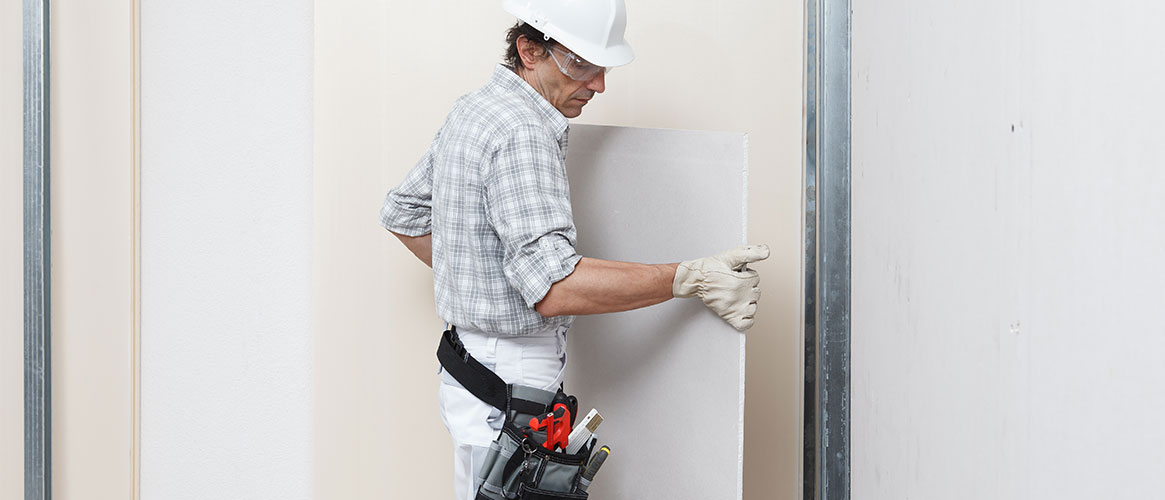Note: Cal/OSHA has specific regulations that govern the exposure limits for respirable crystalline silica. These include requirements for a written program, exposure monitoring and employee notifications, dust control equipment and work practices, signage, employee training, and medical surveillance. See Cal/OSHA’s Silica FAQs.
Drywall installers put the final touches on home and office interiors by putting up walls. Your workers are at risk of back injuries, falls, and respiratory exposure to dusts, including silica. It’s important to understand these risks and take the necessary steps to avoid the injuries and illnesses associated with them.
Drywall sheets typically range from 50-to-110 pounds each
Handle these sheets with care during transport and installation to prevent strains and sprains to backs, shoulders, and arms. First, have the sheets delivered and stacked as close to the installation site as possible. Next, use forklifts, dollies, and drywall lifts and/or jacks to move and position sheets.
Minimize hand carrying and installation. Pick up one sheet at a time. Special sheet gripper tools or grip-dot gloves help you hold sheets securely without exerting a lot of handgrip force. Use a team lift to raise and position sheets. Lift sheets with your legs and a straight back. Don’t twist your back while you lift.
To prevent falls, keep floors and pathways clear. While working and looking up at ceiling installations, periodically check your feet to ensure you have a safe pathway. Never wear stilts. Avoid unstable and makeshift scaffolds. Sturdy scaffolds or 20-inch wide stepstools are the best choices for elevated work. Don’t try to use stairs while carrying drywall alone. Team-carry sheets upstairs or use tools to transport them upstairs.
Drywall sheets and joint compound contain hazardous ingredients
This includes talc, calcite, mica, gypsum, and silica. Drywall dust contains crystalline silica and mica that are named hazardous materials by OSHA. Read the safety data sheets (SDS) for your brand of drywall and compound for manufacturer-recommended safe work practices. Minimize dust emissions and use good ventilation. Wear safety glasses and a respirator when you are exposed to dust. Use wet work practices for sanding and vacuum-equipped cutting and sanding tools. Use a pole-sander to keep the dust away from your face. Carefully mix dry compound powders to avoid creating a dust cloud. Don’t use dry cleanup methods such as air compression hoses or brooms.
